What To Expect
The Dominican Republic is the top destination for travelers in the Caribbean thanks to its affordable all-inclusive resorts, white sand beaches, and amazing climate. Millions of people from all over the world come here for their winter vacations and it’s easy to see why!
Most major resorts are located near Punta Cana, Puerto Plata, and La Romana and all three locations are great choices for your resort vacation. However if you want something a bit more traditional, then some of the most popular local beach destinations include Cabarete, Las Galeras, and Las Terrenas.
However, there is more to the country than just its beaches! The Dominican Republic was actually the first place that Christopher Columbus discovered back in 1492 and this history can be seen in its capital, Santo Domingo, which is full of beautiful colonial architecture.
Other notable attractions include whale watching in Samaná Bay, day-trips to the Saona and Catalina Islands, hiking to see the waterfalls in Jarabacoa, and exploring the Las Ondas Cenote.
With so much to offer, the Dominican Republic has something for everyone!
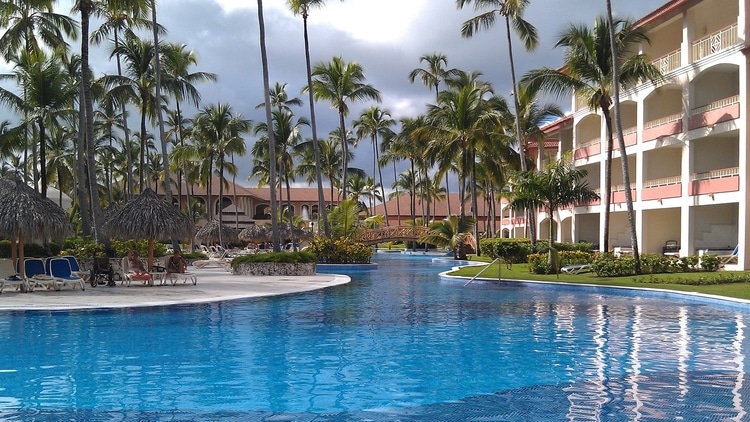
Citizens of most developed countries can enter the Dominican Republic visa-free for up to 3 months. If you are not a citizen of a visa-exempt country, you have to go to the nearest Dominican embassy and apply for a tourist visa to be granted entry.
The Hepatitis A and Typhoid vaccines are recommended, especially if traveling to rural areas. Also make sure you are up to date on your standard vaccinations and consult a health professional for further advice.
In addition, a Yellow Fever vaccination is mandatory if you are traveling to the Dominican Republic from a country with a risk of YF transmission, including if you only passed through the airport.
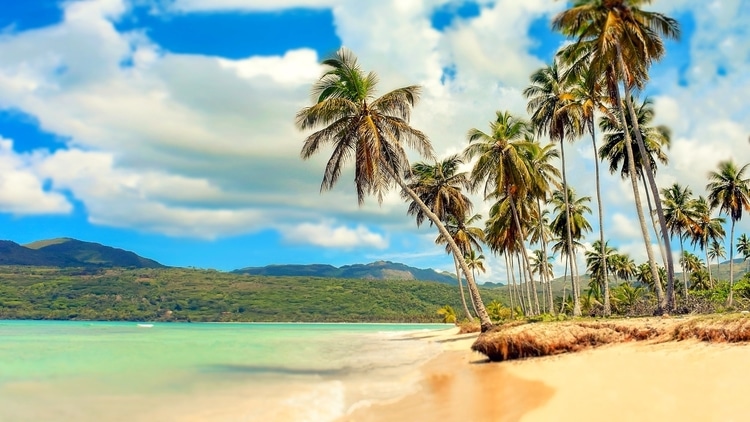
Key Information
Population: 10.5 Million
Capital City: Santo Domingo
Languages Spoken: Spanish
Currency: Dominican Peso (DOP/$)
State Railway: None
Driving Side: Right
Largest Airports:
1. Punta Cana (PUJ)
2. Santo Domingo (SDQ) – Las Américas
3. Santiago de los Caballeros (STI) – Cibao
4. Puerto Plata (POP) – Gregorio Luperón
5. La Romana (LRM) – Casa De Campo
Best Time To Visit
Similar to most islands in the Caribbean, the Dominican Republic benefits from a tropical climate that keeps the island nice and warm all year round. However, there are two seasons which you should be aware of: the dry season, which takes place in the winter and spring, and the rainy season which is in summer and autumn.
The best time to visit the Dominican Republic is during its dry season (December – April) as temperatures are pleasant and the skies typically stay blue. If you want to escape the crowds and benefit from lower prices, try going in May or June.
If you plan to travel in the summer or autumn, be aware that it is typically hurricane season, especially in September and October. And if traveling during the high season, make sure to reserve your transportation and accommodation in advance to avoid sold-out tickets and fully-booked rooms.
High Season: December – April
Low Season: August – November
Top 5 Destinations

Punta Cana

Santo Domingo
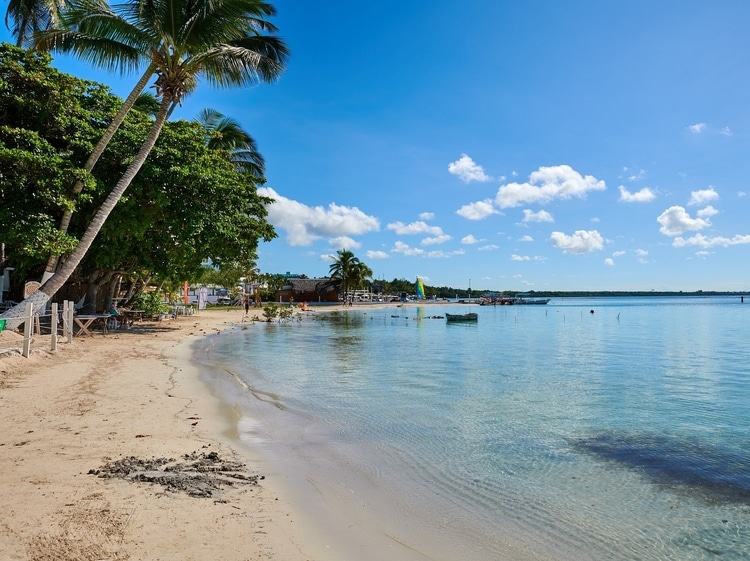
Puerto Plata

La Romana
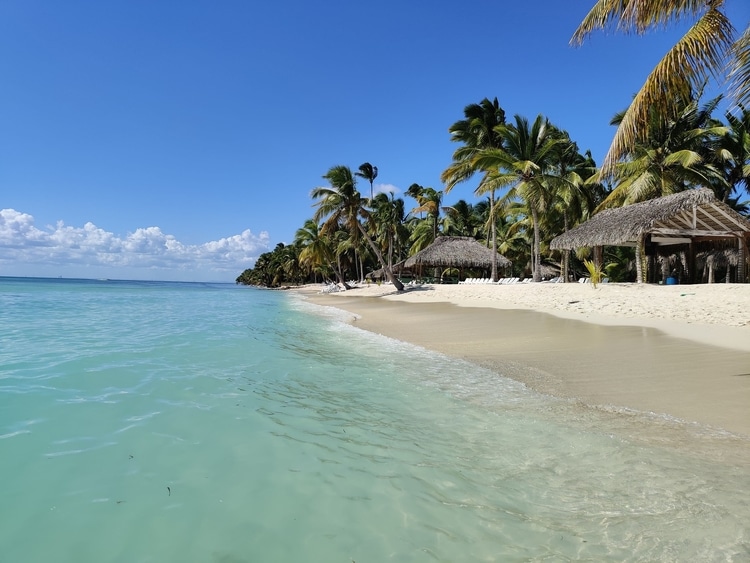
Saona Island
Currency Information

The currency used in the Dominican Republic is the Dominican Peso (DOP/$), although the US Dollar is also accepted in many tourist destinations. The notes come in denominations of $50, $100, $200, $500, $1000, & $2000.
The coins come in denominations of $1, $5, $10, & $25. The Peso is also further divided into 100 Centavos (¢), but centavo coins are not often used due to their low value.
Use the currency converter below to determine the latest exchange rate.
Tipping Guide
Tipping is customary in the Dominican Republic as locals typically earn lower wages and rely on tips to supplement them. Tips can be given in US Dollars or the equivalent in Dominican Pesos. When tipping, here are some guidelines to follow:
Hotel Bellhops: $1-2 USD per bag
Hotel Housekeepers: $1-2 USD per day
Restaurant Servers: 10% of the total bill (or $1-2 USD per meal if staying at an all-inclusive resort)
Bartenders: $1-2 USD per drink
Taxi/Uber Driver: not expected so no need to tip
Tour Guide: 15-20% of the total tour price on single-day tours and at least $10 USD per day on multi-day tours
Power Outlet Information


Just like most of the Americas, the Dominican Republic uses both the Type A and Type B power outlets interchangeably. Type A plugs can fit in Type B outlets, but not vice versa.
Get your compatible Type A/B adapter here.
The voltage used in the Dominican Republic is 120V. Learn more about how this may affect your electronic devices in my Guide to the Top Travel Accessories.
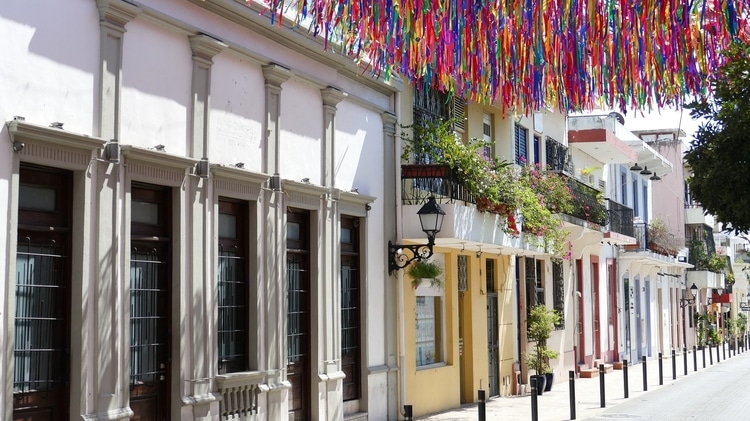
Cellphone Information
The Dominican Republic has average overall 4G LTE coverage and it can be spotty in rural areas. Make sure your phone is GSM-compatible with at least one of the 3G frequencies and the primary 4G LTE band used in the country to ensure you will always have a connection.
Learn more about this in my Guide to Travel-Ready Phones.
Note: if you’re only staying in a resort, you may not need to worry about this as most resorts have wifi anyways.
Info about local prepaid SIM cards in the Dominican Republic
Calling Code: +1
Emergency Number: 911 (Police, Ambulance, & Fire)
3G Frequencies Used: 1900, 900, & 850
4G LTE Bands Used: 4 (primary) + 3 & 38


